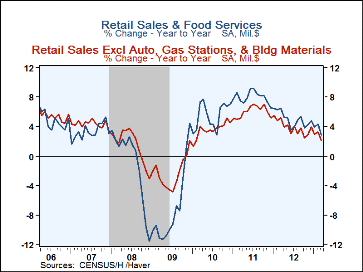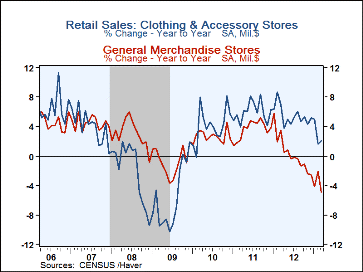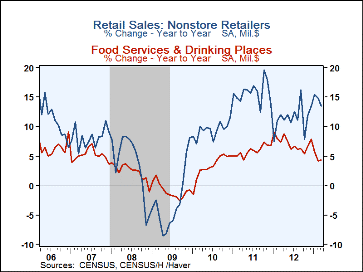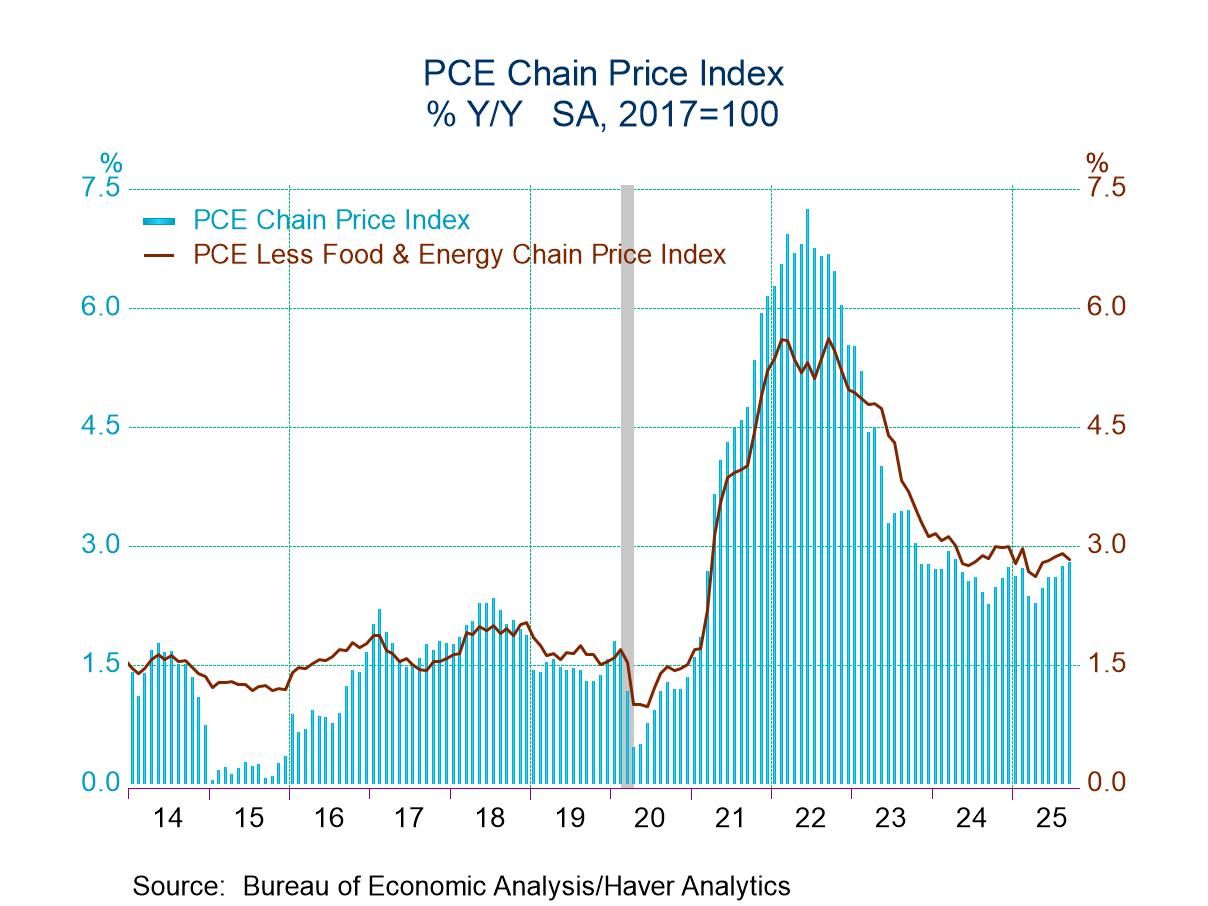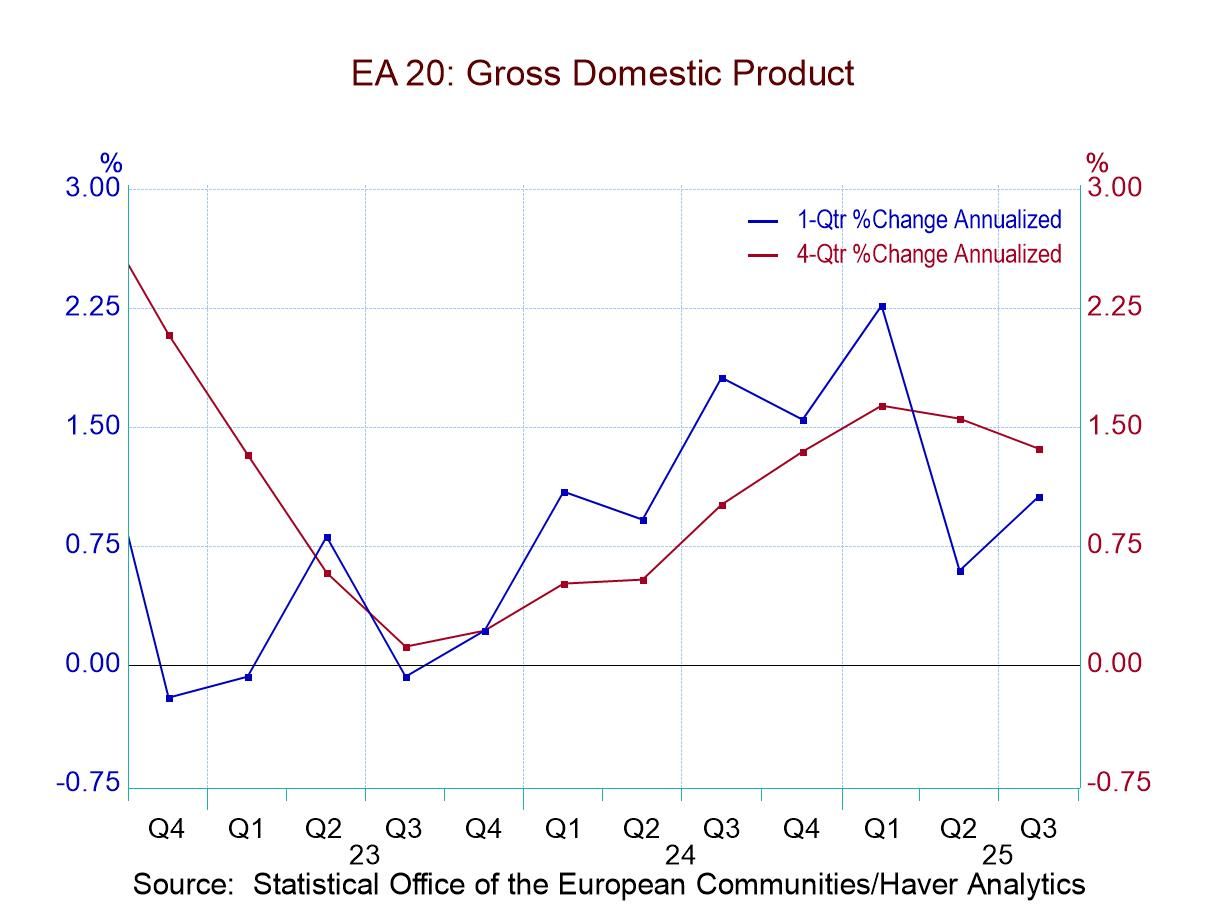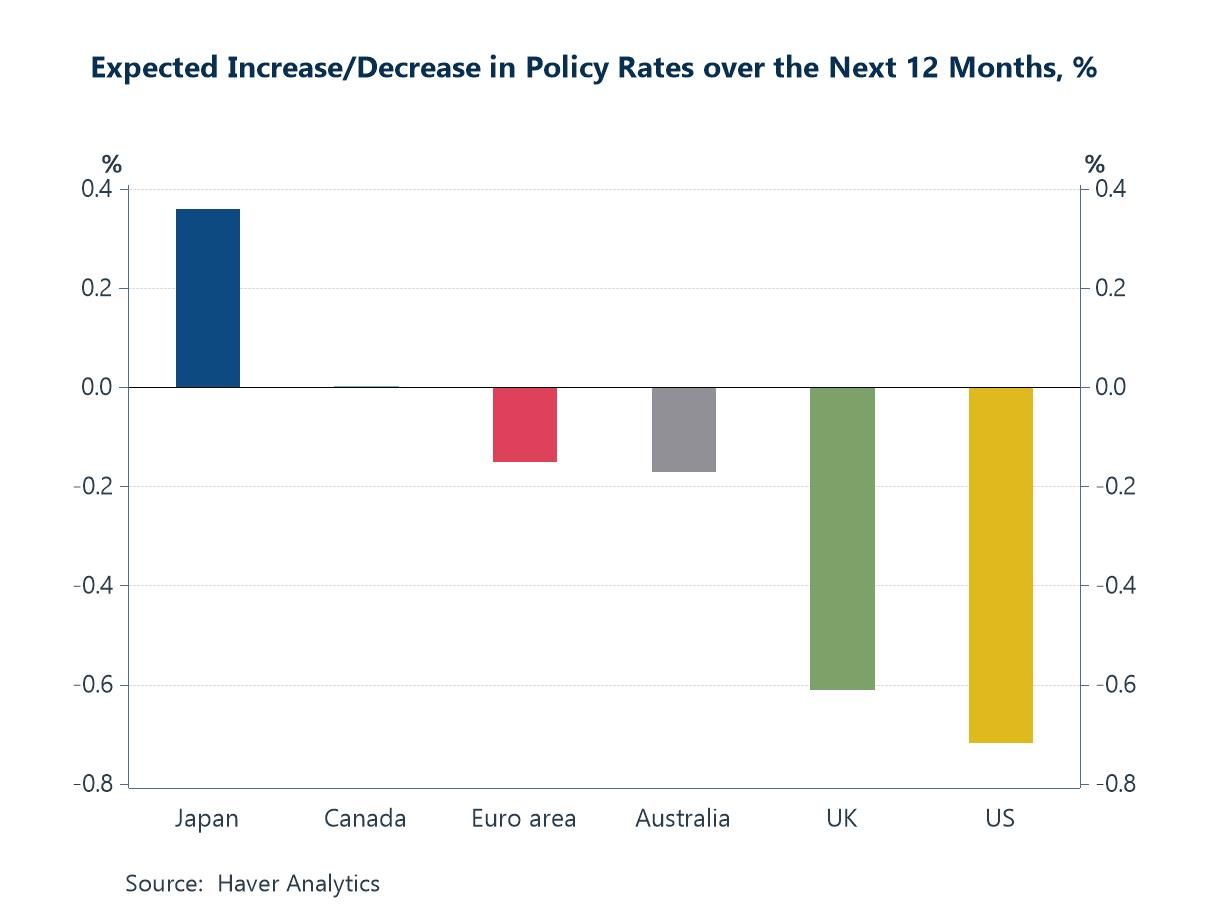 Global| Apr 12 2013
Global| Apr 12 2013U.S. Retail Sales Led Lower by Gasoline Price Decline
by:Tom Moeller
|in:Economy in Brief
Summary
Retail sales during March fell 0.4% (+2.8% y/y) following a 1.0% rise in February, earlier reported as 1.1%. The latest decline was deeper than an expected 0.1% slip, according to Action Economics. Retail sales excluding autos also [...]
Retail sales during March fell 0.4% (+2.8% y/y) following a 1.0% rise in February, earlier reported as 1.1%. The latest decline was deeper than an expected 0.1% slip, according to Action Economics. Retail sales excluding autos also fell 0.4% (+3.9% y/y) after an unrevised 1.0% increase. No change in sales was expected.
Sales declines last month were widespread across spending categories. Leading last month's shortfall was a 2.2% (-0.4% y/y) drop gasoline service station sales. Also off 0.6% (+6.5% y/y) were purchases of motor vehicles & parts as unit vehicle sales sagged. Building material sales inched up 0.1% (0.8% y/y). Spending outside of these three areas is used in calculating a portion of gross domestic product, and these sales fell 0.3% (+2.1% y/y) last month. For the quarter these purchases rose 3.0% (AR), about the same as during Q4'12.
Sales at electronics and appliance stores were quite weak last month and fell 1.6% (-3.2% y/y), down for the fourth straight month. Sales at general merchandise stores followed with a 1.2% drop (-4.9% y/y), off for the sixth month in the last seven. Higher sales of furniture & home furnishing stores countered these declines with a 0.9% rise (2.8% y/y) after a 1.4% February fall. Apparel store sales ticked up 0.1% (2.1% y/y) after a 0.3% February drop.
Food & beverage store sales slipped 0.1% (3.0% y/y) but a 0.7% rise (4.3% y/y) in restaurant sales offset this weakness. Sales of nonstore retailers rose 0.3% (13.5% y/y) following a 1.4% jump during February.
The retail sales figures are available in Haver's USECON database. The Action Economics figures are in the AS1REPNA database.
| Retail Spending (%) | Mar | Feb | Jan | Mar Y/Y | 2012 | 2011 | 2010 |
|---|---|---|---|---|---|---|---|
| Total Retail Sales & Food Services | -0.4 | 1.0 | -0.1 | 2.8 | 5.0 | 8.0 | 5.5 |
| Excluding Autos | -0.4 | 1.0 | 0.1 | 3.9 | 4.4 | 7.4 | 4.5 |
| Non-Auto Less Gasoline & Building Supplies | -0.3 | 0.4 | 0.1 | 2.1 | 3.9 | 6.1 | 3.6 |
| Retail Sales | -0.6 | 1.2 | -0.0 | 2.6 | 4.8 | 8.3 | 5.8 |
| Motor Vehicle & Parts | -0.6 | 1.3 | -0.8 | 6.5 | 7.6 | 10.8 | 10.8 |
| Retail excluding Autos | -0.6 | 1.2 | 0.2 | 1.7 | 4.1 | 7.6 | 4.7 |
| Gasoline Stations | -2.2 | 5.4 | 0.3 | -0.4 | 3.8 | 17.8 | 14.7 |
| Food Service & Drinking Places Sales | 0.7 | -0.5 | -0.5 | 4.3 | 7.1 | 5.9 | 3.2 |
Tom Moeller
AuthorMore in Author Profile »Prior to joining Haver Analytics in 2000, Mr. Moeller worked as the Economist at Chancellor Capital Management from 1985 to 1999. There, he developed comprehensive economic forecasts and interpreted economic data for equity and fixed income portfolio managers. Also at Chancellor, Mr. Moeller worked as an equity analyst and was responsible for researching and rating companies in the economically sensitive automobile and housing industries for investment in Chancellor’s equity portfolio. Prior to joining Chancellor, Mr. Moeller was an Economist at Citibank from 1979 to 1984. He also analyzed pricing behavior in the metals industry for the Council on Wage and Price Stability in Washington, D.C. In 1999, Mr. Moeller received the award for most accurate forecast from the Forecasters' Club of New York. From 1990 to 1992 he was President of the New York Association for Business Economists. Mr. Moeller earned an M.B.A. in Finance from Fordham University, where he graduated in 1987. He holds a Bachelor of Arts in Economics from George Washington University.


